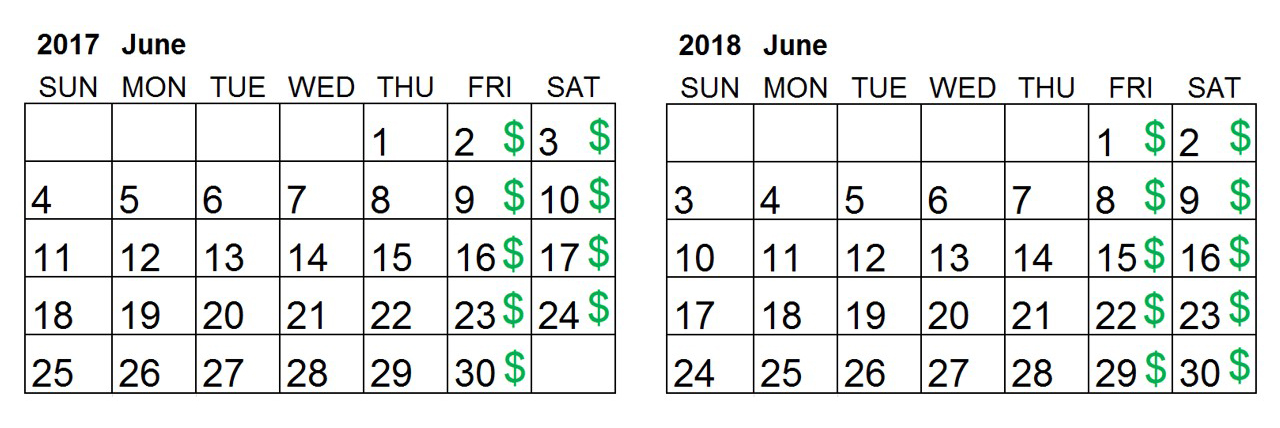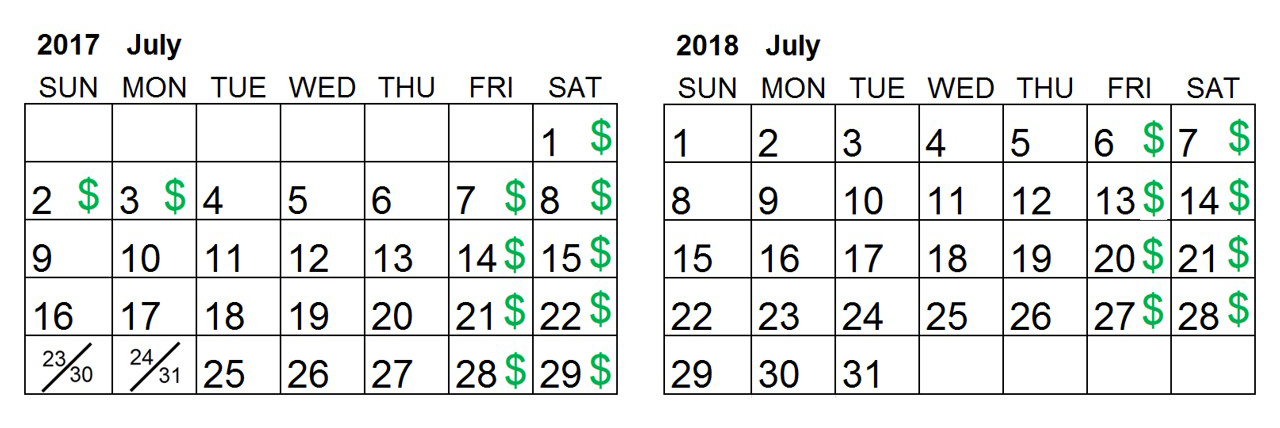By Tucker Johnson
I recently conducted an educational seminar for some industry managers covering P&Ls and Budgeting. As part of the session I had them take some day-by-day hotel numbers from June of 2017 and forecast what June of 2018 would look like. I told them the industry was expecting a three percent increase for the next year. The hotel was busy on the weekends and slower during the weekdays.
All of the participants forecasted exactly three percent above the June 2017 total for June 2018. I told them that when forecasting, “There are no right numbers, but there are wrong numbers. And all of you are wrong.” They didn’t know what I was talking about so I elaborated.
I told them that when forecasting you need to consider the days of the week and how they line up year-over-year. You want to match revenues to the day of week not date of the month. This is especially important when your weekends are busier than your weekdays (or vice-versa). For example, when looking at June 2017 vs. June 2018 there are differences. Below I have labeled high revenue dates (weekends) for both years with dollar signs:
June 2018 has one more Saturday and one less Thursday than June 2017. If you are running a leisure hotel, just the changes in days of the week will result in additional revenue for June 2018 (even if demand does not increase). If the industry is expecting a three percent increase, the favorable day of the week changes in June will likely result in a six percent revenue increase for a leisure-heavy hotel.
Armed with the insight of looking at days of the week instead of dates of the month, I asked my participants to forecast July 2018 based on July 2017 numbers. Again I told them the industry was expecting a three percent increase for the next year. The hotel was busy on the weekends and slower during the weekdays. This time forecasts changed. Most of them came back with July 2018 revenues down about two percent compared to July 2017.
I told them they were moving in the right direction, but I think it may even be worse than that. I discussed how most people only get the actual Fourth of July off from work. When it falls on a Thursday or Tuesday, many people will take an additional day to make it a four-day weekend. This is good for hotels and results in a strong weekend closest to the Fourth of July. In the case of 2017, the Fourth landing on a Tuesday resulted in strong business on the three days prior.
These early July numbers will not be repeated in 2018 with the Fourth of July falling on a Wednesday, since very few people are going to take additional days off. Also, hotels are losing a holiday weekend day (Saturday, July 1st, 2017) in exchange for a non-holiday day (Tuesday, July 31st, 2018). This shifting of the days of the week in conjunction with the Fourth of July falling on a Wednesday will likely result in a five to eight percent year-over-year revenue decline for July 2018 vs. July 2017. I have labeled high revenue dates for both years with dollar signs below (notice no demand generated by the Fourth of July in 2018):
When budgeting for 2018 it is important to be as accurate as possible. If you’re running a leisure hotel, forecasting a decline in July is probably the right thing to do. But you also have nine months to figure out a way to increase revenues in July. Now is the time to start planning specials and making sure rates are high and discounts are closed on peak days; you are going to need every dollar you can get. The first step is an accurate revenue forecast, the second step is figuring out how to put revenue into months where you can see a shortfall coming.
Good luck next year and don’t forget: coming in 2020 is an extra day in February (Leap Day), which alone will likely account for a three percent year-over-year increase!



